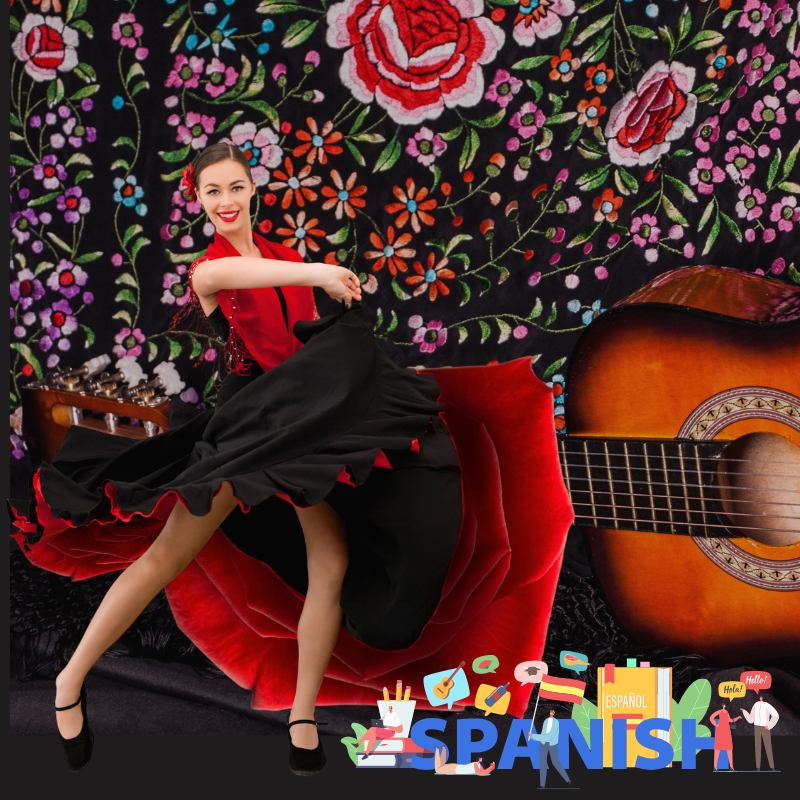Discover the fascinating connection between Flamenco and the Spanish language in this insightful exploration. Uncover how Flamenco has influenced the linguistic landscape of Spain.
Flamenco, the passionate and expressive dance form that originated in Andalusia, Spain, has a deep connection to the Spanish language. This connection goes beyond the mere fact that Flamenco is often performed to Spanish music and lyrics. In fact, Flamenco has had a profound influence on the linguistic landscape of Spain, shaping the way the Spanish language is spoken and understood. Join us on this insightful exploration as we delve into the fascinating connection between Flamenco and the Spanish language.
The Origins of Flamenco and its Cultural Significance
It is known that there are strong connections between language and culture. Flamenco, a unique and captivating art form, originated in the Andalusian region of Spain. It is believed to have emerged from a fusion of various cultural influences, including the music and dance traditions of the Romani people, the Moors, and the indigenous people of Andalusia. At its core, Flamenco is all about raw emotion and unfiltered expression. Through intricate footwork, soulful singing, and passionate guitar strumming, artists communicate their innermost feelings to the audience. Joy, sorrow, love, and pain find an outlet in the mesmerizing rhythm and melody of Flamenco, forging an intense connection between the performer and the listener.
Over time, Flamenco has become deeply ingrained in Spanish culture, serving as a powerful expression of emotion and identity. Its cultural significance extends beyond entertainment, as it has played a role in shaping the identity of the Spanish people and their language. Join us as we explore the origins of Flamenco and its profound cultural significance in Spain.

Flamenco’s Popularity in the 19th Century
Sandie Holguín, a professor of history at the University of Oklahoma, explains in her latest book that the popularity of flamenco in the middle of the 19th century was influenced by the French Revolution and the rejection of Enlightenment principles like cosmopolitanism. To compete with France and Britain, the afrancesados, or ilustrados, tried to reform the Spanish government. They embraced French cultural customs as well as the aristocratic and bureaucratic classes’ attire and demeanour in France.
The working classes and aristocracy in Madrid chose to embrace the persona and attire of the majo or maja, expressing their politics and nationalism via fashion, in order to convey their resistance and dissatisfaction with French cultural hegemony. The petimetre and majo, who respectively represented the French and native extremes of fashion, were imitating the majo outfit and dancing the seguidillas with an Andalusian flavour. The majo dress became a fashion trend because the Spanish nobles imitated it.
This union of lower and upper class Spaniards created a sense of cultural affinity that permeated flamenco culture up until the civil war. Johann Gottfried Herder encouraged cultural nationalism in the nineteenth century and urged nationalists to look for the fundamental foundations of their country’s creativity. Through the “cultivation of culture,” which decontextualizes and appropriates local culture for contemporary needs and values, intellectuals throughout Europe started to develop their nationalism. In Spain, Andalusia emerged as the source that these thinkers most frequently drank from.
Flamenco’s Impact on Spanish Vocabulary and Expressions
Through its expressive lyrics and passionate performances, Flamenco has contributed to the development of unique vocabulary and expressions in Spanish. Many Flamenco terms have become part of everyday language, allowing individuals to convey their emotions and experiences with the depth and intensity that are characteristic of this art form.
Flamenco’s influence on the Spanish language is evident in the creation of idioms inspired by its emotive performances. One characteristic phrase is “tener duende,” referring to someone with a unique charm or magnetism. This is also a term used to describe the intense emotional state experienced during a Flamenco performance.
Other phrases that have their origins in the world of Flamenco are “ponerse las pilas,” meaning to get motivated or energized and “tener arte” (to have the art). These idioms reflect the depth of emotions that the art form encapsulates, transcending literal meanings to convey profound sentiments. Flamenco has left an indelible mark on the linguistic landscape of Spain.
The Influence of Flamenco on Spanish Pronunciation and Rhythm
The Spanish language is significantly influenced by flamenco not only in terms of vocabulary and expressions but also in terms of pronunciation and rhythm. The unique cadence and melodic patterns of Flamenco music have seeped into the way Spanish is spoken, giving it a distinct musicality. The use of melismas, vocal ornamentations, and rhythmic patterns in Flamenco singing has influenced the way certain words are pronounced in Spanish.
Additionally, the rhythmic structure of Flamenco has influenced the natural flow and cadence of spoken Spanish, giving it a lively and dynamic quality. By exploring the influence of Flamenco on Spanish pronunciation and rhythm, we gain a deeper understanding of how this art form has shaped the linguistic identity of Spain.
Flamenco’s Role in Shaping Regional Dialects in Spain
Regional dialects in Spain have been greatly influenced by flamenco. Different parts of the country have adopted the distinctive musicality and rhythm of flamenco, which has influenced how people speak there. For example, in Andalusia, the birthplace of Flamenco, the regional dialect is characterised by a strong emphasis on rhythm and a melodic intonation.
The use of melismas and vocal ornamentations in Flamenco singing has seeped into the speech patterns of the Andalusian dialect, giving it a unique musical quality. Similarly, in regions where Flamenco has a strong presence, such as Extremadura and Murcia, the regional dialects also exhibit traces of Flamenco’s influence on pronunciation and rhythm. By studying the linguistic impact of Flamenco, we can gain insights into the rich cultural heritage and diversity of Spain.
The Global Spread of Flamenco and its Linguistic Influence
Flamenco, a traditional Spanish art form, has not only captivated audiences around the world with its passionate music and dance but has also left its mark on the linguistic landscape of various countries. As Flamenco spread beyond Spain’s borders, it influenced the way people spoke in regions where it gained popularity. In countries like Argentina and Mexico, where Flamenco has a strong presence, the local dialects have incorporated Flamenco’s rhythmic patterns and melodic intonations.
Flamenco’s influence on language is not limited to Spanish-speaking countries. In places like India and Japan, where Flamenco has also gained a following, its unique vocal style and expressive gestures have inspired local artists to incorporate similar elements into their own traditional music and dance forms. This cross-cultural exchange further demonstrates the universal appeal of Flamenco and its power to foster artistic connections across continents. This linguistic influence showcases the global reach and cultural impact of Flamenco, highlighting its ability to transcend boundaries and connect people through language and music.





